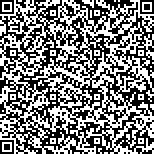下载中心
优秀审稿专家
优秀论文
相关链接
摘要

红树林物种遥感分类受影像分辨率、波段信息、分类策略、影像特征选择方法等因素影响。现有的红树林物种遥感分类研究大多关注于分类精度的比较,较少报道商业高分与国产高光谱卫星的结合在物种分类的应用。基于湛江高桥红树林保护区的高分(WorldView-2)和高光谱(珠海一号)卫星影像,本文旨在利用随机森林分类方法,比较不同特征选择算法(极端梯度提升(XGBoost)、极端随机树(ERT)、连续投影算法(SPA))和不同空间分辨率(WorldView-2影像从0.5 m的分辨率重采样为1 m、2 m、4 m、8 m、10 m)对红树林物种分类精度的影响,并耦合WorldView-2与珠海一号影像研究红树林物种空间分布格局及影响因素。每种空间分辨率的WorldView-2影像提取248个特征(52个光谱特征及196个纹理特征),珠海一号影像提取117个光谱特征。结果表明,XGBoost方法优于ERT和SPA,在影像特征选择中具有巨大优势;与其他空间分辨率相比,2 m分辨率的WorldView-2影像具有更高的分类精度;耦合WorldView-2和珠海一号影像的分类精度(分辨率:2 m,总体精度:88.98%,kappa系数:0.846)高于单一的WorldView-2影像(分辨率:2 m,总体精度:83.47%,kappa系数:0.768)和珠海一号影像(分辨率:10 m,总体精度:78.50%,kappa系数:0.703);另外,林窗、高程、离岸距离一定程度上影响红树林物种分布格局。本文表明WorldView-2与珠海一号高光谱影像的结合在景观及区域尺度上精确提取红树林物种信息具有巨大潜力,有利于红树林生物多样性保护及科学管理。
Remotely sensed classification of mangrove species is affected by image resolution, spectral information, classification strategy, and image feature selection methods. The present studies of mangrove species classification using remote sensing mostly focus on comparison of classification accuracy, and few of them discuss the spatial pattern of species distribution and the corresponding influencing factors. The combination of high-resolution and hyperspectral satellite images in species classification of mangrove forest has received less attention. With WorldView-2 and Zhuhai-1 images in Gaoqiao mangrove Reserve, this study aims to compare the effects of different feature selection methods (XGBoost, eXtreme gradient boosting; ERT, extremely randomized trees; SPA, successive projections algorithm) and different image resolutions (the WorldView-2 image with a resolution of 0.5 m was resampled to 1, 2, 4, 8, and 10 m) on the classification accuracy of mangrove species based on random forest classification model and to explore the spatial pattern of mangrove distribution and the corresponding influencing factors based on the coupling of WorldView-2 and Zhuhai-1 images.With each spatial resolution of WorldView-2 image, 248 features were extracted, including 52 spectral features (eight spectral bands, 38 vegetation indices, three principal component bands, and three tasseled cap transformation bands) and 196 texture features (seven windows of 3×3, 5×5, 7×7, 9×9, 11×11, and 15×15; for each window, 28 texture features were extracted). With Zhuhai-1 hyperspectral image, 117 spectral features (32 original spectral bands, 32 first derivative bands, 47 vegetation indices, three principal component bands, and three tasseled cap transformation bands) were extracted.Results showed that XGBoost was superior to ERT and SPA, which had great advantage in image feature selection. Among the six types of WorldView-2 image resolution, the 2 m resolution was optimal for species classification, and the red edge band (705—745 nm) played an important role in species classification. The coupling of WorldView-2 and Zhuhai-1 images (resolution: 2 m, overall accuracy: 88.98%, kappa coefficient: 0.846) had better performance than using single WorldView resolution: 2 m, overall accuracy: 83.47%, kappa coefficient: 0.768 and Zhuhai-1 image (resolution: 10 m, overall accuracy: 78.50%, kappa coefficient: 0.703). The classification map based on the coupled image features illustrated that the area of Aegiceras corniculatum accounted for the largest proportion (33.77 % ), followed by Bruguiera gymnorrhiza (30.44%), Avicennia marina (26.96%), Bruguiera gymnorrhiza (6.08%), Sonneratia apetala (2.72%), and Kandelia candel (0.02%). Moreover, to some extent, forest gap, surface elevation, and offshore distance greatly affected the spatial distribution pattern of mangrove species.This study demonstrated that the combination of WorldView-2 and Zhuhai-1 image had great potential in accurate mapping mangrove species at the landscape and regional scales, thereby facilitating biodiversity protection and scientific management of forest ecosystem and providing technical and data support for retrieval of ecosystem parameters (e.g., carbon storage, net primary production, and leaf area index) and health evaluation of mangrove forests. Future research will focus on the fusion of WorldView-2 and Zhuhai-1 image to simultaneously achieve high spatial resolution and hyperspectral bands and the inclusion of canopy height and leaf trait information (e.g., chlorophyll and water content) to the classification model.

